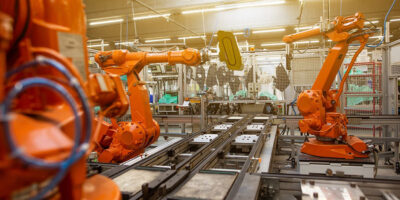HighPCB: Perfect Flexible PCB Fabrication with Polycarbonate, Polyester, and Polyamide Sections
Flexible PCBs, also known as flex circuits, offer unique advantages in electronic applications where space constraints, complex geometries, or dynamic flexing are involved. At HighPCB, we specialize in flexible PCB fabrication, including boards with three sections: polycarbonate, polyester, and polyamide. We are committed to delivering perfect results through our advanced manufacturing processes, material expertise, and dedication to quality.
- Polycarbonate Section: Polycarbonate is a thermoplastic material known for its excellent impact resistance, high-temperature performance, and dimensional stability. HighPCB has expertise in working with polycarbonate materials and can fabricate the polycarbonate section of your flexible PCB to meet your specific requirements. Polycarbonate sections are often used in applications where mechanical strength and durability are crucial.
- Polyester Section: Polyester, also known as polyethylene terephthalate (PET), is a widely used material in flexible PCB fabrication. It offers good electrical insulation properties, flexibility, and chemical resistance. HighPCB is experienced in working with polyester materials and can fabricate the polyester section of your flexible PCB to meet your specific needs. Polyester sections are commonly used in applications where flexibility and lightweight design are important.
- Polyamide Section: Polyamide, commonly referred to as Kapton®, is a high-performance thermoplastic material known for its exceptional thermal stability, mechanical strength, and chemical resistance. HighPCB has expertise in working with polyamide materials and can fabricate the polyamide section of your flexible PCB to meet your specific requirements. Polyamide sections are often used in applications where high-temperature resistance and reliability are critical.
- Advanced Manufacturing Processes: HighPCB utilizes advanced manufacturing processes and state-of-the-art equipment to fabricate flexible PCBs with precision and accuracy. Our skilled technicians follow strict process control measures to achieve consistent results. We employ techniques such as laser cutting, imaging, etching, plating, drilling, lamination, solder mask application, and surface finishing to ensure high-quality flexible PCBs.
- Material Selection: HighPCB works with trusted material suppliers to source high-quality flexible laminates and coverlays for flexible PCB fabrication. We select materials with excellent flexural and electrical properties, as well as good adhesion characteristics. Common materials used include polyimide film, adhesiveless polyimide, and polyester film.
- Thorough Testing and Quality Control: HighPCB conducts extensive testing and quality control procedures to ensure the reliability and performance of flexible PCBs. We perform electrical testing, impedance testing, flex testing, solderability testing, and other necessary inspections to verify compliance with industry standards and achieve optimal functionality.
- Adherence to Industry Standards: HighPCB follows industry standards and guidelines to ensure the highest quality in flexible PCB fabrication. We adhere to IPC-6013, which defines the qualification and performance requirements for flexible printed boards. By following these standards, we ensure that your flexible PCBs meet the required specifications and performance criteria.
- Documentation and Traceability: HighPCB maintains comprehensive documentation and traceability throughout the flexible PCB fabrication process. We record manufacturing parameters, materials used, testing results, and other relevant information to provide transparency and facilitate future revisions or troubleshooting.
- Customized Solutions: HighPCB understands that each flexible PCB project is unique. We offer customized solutions tailored to your specific requirements, including stack-up design, impedance control, routing, and component placement. Our experienced engineers work closely with you to optimize the design and manufacturing process, ensuring the best possible outcome for your flexible PCB project.
Partner with HighPCB for Perfect Flexible PCB Fabrication:
When it comes to flexible PCB fabrication with polycarbonate, polyester, and polyamide sections, HighPCB is your trusted partner. With our advanced manufacturing capabilities, material expertise, and commitment to quality, we can deliver perfect flexible PCBs that meet your specific requirements. Contact us today to discuss your flexible PCB fabrication needs and experience the excellence of HighPCB’s services.







